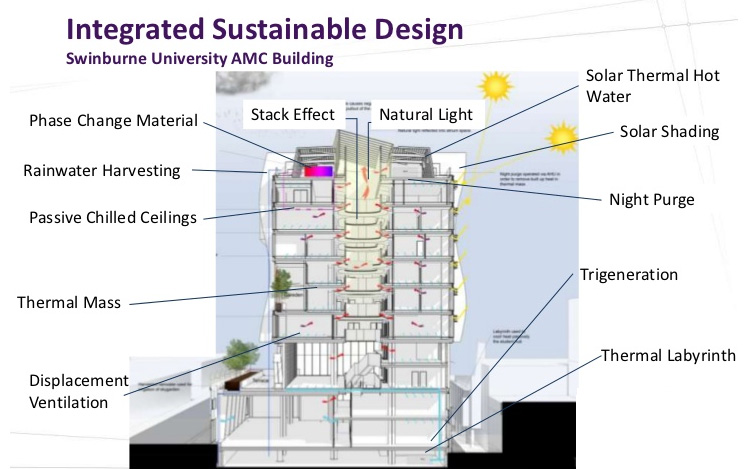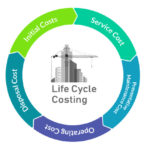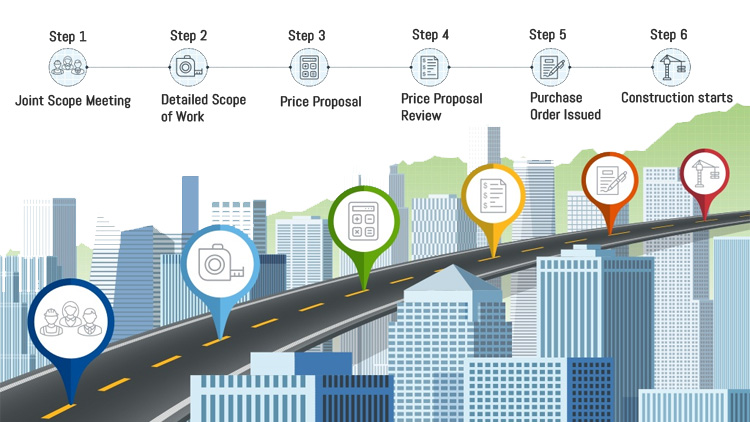Sustainable building is becoming increasingly important as more nations begin to have the capability to build on a larger scale and as environmental initiatives, grants, and regulations are put in place.
The EPA lists components of green building as the following: energy efficiency and renewable energy, water efficiency, environmentally friendly materials, waste reduction, lowering toxics, indoor air quality, and sustainable development and growth.
An effective combination of these components should yield a future for building that is not only healthier for our environment, but in turn healthier for those who live, work, and visit these new spaces and buildings that are built each day.
Elements of Green Building
Energy Efficiency
The EPA suggests energy saving and renewable energy sources when building through their ENERGY STAR program.
You’ve probably seen the Energy Star label on many of the appliances and electronics you’ve purchased recently, but there can also be Energy Star certified homes, condos, and apartments that are certified to be energy efficient in how they function and how they were built.
Any home that has earned this certification was built and developed by Energy Star partner builders and developers. Beyond this, the builder and developer build the home and a follow up inspection occurs to ensure the practices and materials used are energy efficient.
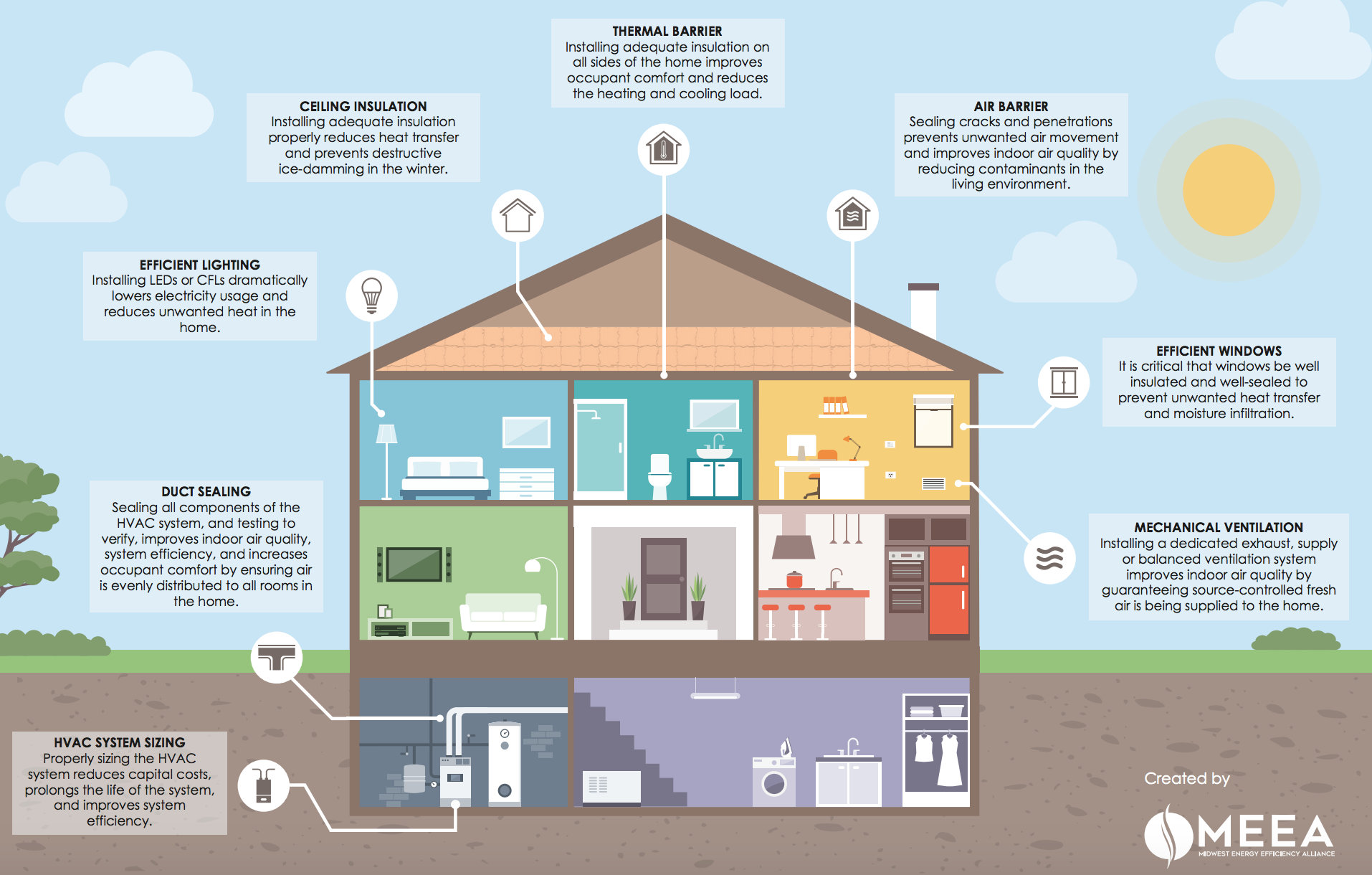
These homes are built with efficient heating and cooling systems that ensure good air quality in the home. They’re also built with protection from any water damage or water-induced air quality issues.
This water protection is a top to bottom shield from the roof to the foundation. They also include efficient insulation that requires less energy to keep your home at a desirable temperature along with windows that have protective coatings and innovative frames to keep energy in the house.
This also helps the homeowner by lowering utility bills. And lastly, of course energy efficient appliances and lights are included in any Energy Star certified home. These same principles can be applied to commercial spaces as well as homes.
Water Efficiency
Water efficiency is important as well for ensuring sustainable building practices. The US EPA listed common best management practices for building with water efficiency starts with monitoring and educating those who use any given building. Monitoring includes keeping leaks fixed and metering water usage. Education begins by letting tenants know how they can be water efficient in how they interact with the building.
Beyond this, water efficient sanitary fixtures are important for reducing unnecessary water usage by installing efficient toilets, urinals, faucets, showerheads, laundry appliances, and more.
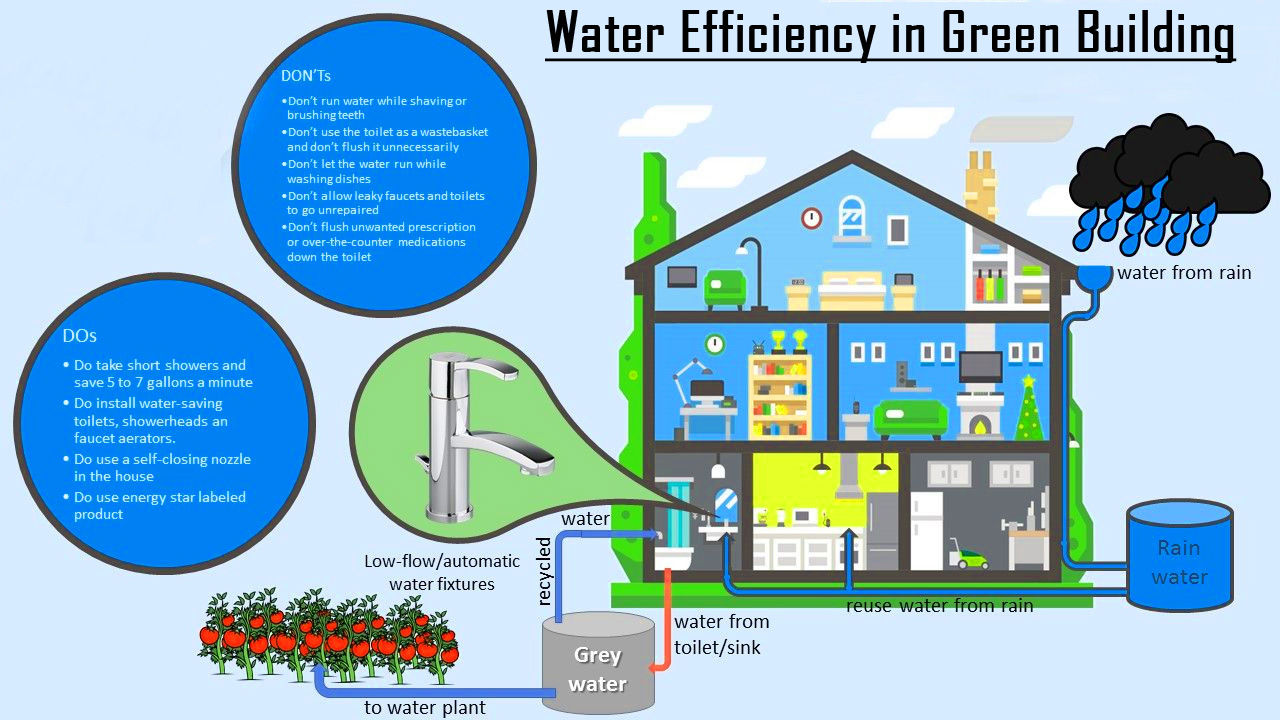
Furthermore, any building with a kitchen can be built with EPA WaterSense certified technology. To top these previous tips off, building with efficient irrigation and landscape technologies and efficient mechanical systems such as boilers can help to create a water efficient building.
Importantly, facilities can also be built with recycling water systems that take water from cooling systems for example and recycle that water so that water isn’t wasted. Water from some systems can be collected at discharge and treated and reused in the same system or cycled into another system altogether. Thinking about water efficiency is key to sustainable building.
Environmentally Friendly Materials
Another major component to building sustainably is using sustainable building materials. These sustainable materials can be identified by the many ecolabels that the EPA has set out and through their recommendations in standards.
Depending on the type of building that you’ll be doing, there are various different recommendations and standards for building materials used in paints, coatings, flooring, and for raw materials such as wood, concrete, and metals. Many codes such as the International Code Council’s 2012 International Green Construction Code and AHSRAE 189.1 are mandatory codes that must be followed.
Further building codes that are voluntary and can ensure that additional steps are being made towards sustainable building can be found in examples such as ICC 700, Green Globes, and US Green Building Council’s LEED code. These standards include recommendations for things such as solar reflectivity, which can lower the amount of heat generated by a material when sitting in the sun.
Using recyclable materials and using efficient storage and collection sites of items such as electronic waste, batteries, or items containing mercury can also increase sustainability.
Doing a waste study can help to identify waste streams, and then these waste streams should be optimized to become recyclable as much as possible.
Waste Reduction
And speaking of waste streams, waste reduction can be a key factor in ensuring sustainable building practices. These waste reduction methods include food and waste recovery, composting, effectively handling hazardous waste, and revitalizing contaminated land such as brownfields by placing renewable energy sites in their place.
Lowering Toxics
Similar and related to waste reduction, toxics reduction should be carefully considered through green engineering. This means that construction should be completed with green chemistry and should carefully consider chemicals such as formaldehyde, polyvinyl chloride, bisphenol-A, flame retardants, and PFCs when building and selecting materials.
Indoor Air Quality
Indoor air quality should be ensured to be high quality and devoid of any dangerous breathable substances. These substances that should be avoided include mold, radon, asbestos, formaldehyde, and more. Not ensuring good indoor quality can have especially negative impact on tenants of a building with existing respiratory issues such as asthma. Areas where wildfires are prevalent should also consider this when building and keeping air quality in mind despite those increased challenges posed by wildfires.
As you can see, there are a lot of different areas of consideration when trying to build for the future in a way that is sustainable and safe for future generations. It can be difficult to manage so many topics of interest when trying to build sustainably, but following sustainable standards and regulations and developing your own checklist or system can help to organize it all and develop positive best management practices.

